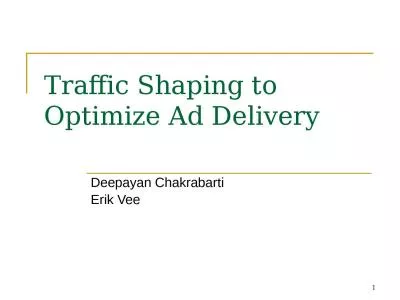PPT-Completing the Real-Time Traffic Picture
Author : lois-ondreau | Published Date : 2019-02-03
Stanley E Young PE PhD University of Maryland Center for Advanced Transportation Technology Traffax Inc Outline Vehicle Probe Project Where we have been where we
Presentation Embed Code
Download Presentation
Download Presentation The PPT/PDF document "Completing the Real-Time Traffic Picture" is the property of its rightful owner. Permission is granted to download and print the materials on this website for personal, non-commercial use only, and to display it on your personal computer provided you do not modify the materials and that you retain all copyright notices contained in the materials. By downloading content from our website, you accept the terms of this agreement.
Completing the Real-Time Traffic Picture: Transcript
Download Rules Of Document
"Completing the Real-Time Traffic Picture"The content belongs to its owner. You may download and print it for personal use, without modification, and keep all copyright notices. By downloading, you agree to these terms.
Related Documents














